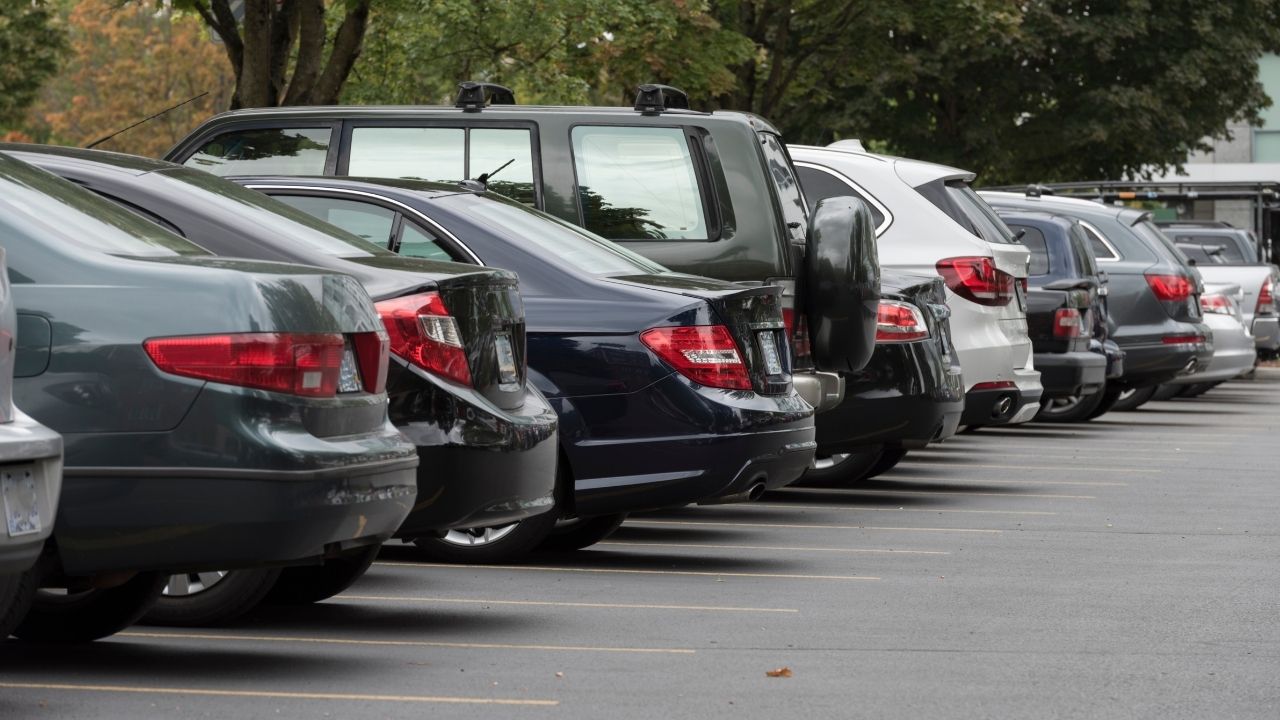Lifestyle
5 Ways to Make your Next Car More Affordable

Buying a car can be one of the most expensive purchases you will make in your lifetime. For a long time it has always been this way but nowadays the purchase price of both new and used cars is higher than it has been for a long time. Coincide this with the cost-of-living crisis in the UK, buying a car may be harder than ever for some! Many drivers need a car to get around so it can be good to consider the following ways to help make your next car purchase a one that suits your budget!
1. Part exchange your current car.
Using your current car as a deposit for your next car is a great way to get money off your next purchase. Part exchanging is when you use the value of the car you have towards your next car. The dealer will value your current car and the valuation will be taken off the purchase price of the car or the finance deal. Part exchanging is a great way to save money on your next purchase and is a hassle-free way of getting rid of your car.
2. Increase your credit score.
If you need to use finance to spread the cost of your next car, it can be worth improving your credit score before you start making applications with lenders. People with low credit scores may find it harder to get approved by a car finance lender or if they do, they can face higher interest rates as they are more of a risk. Usually a lower credit score indicates an inability to stick to the rules of a credit agreement or high levels of existing debt. You should always check your credit score before applying for any form of credit or finance and make improvements where necessary. A low interest rate for car finance will help to make your deal cheaper and means you pay less interest overall.
3. Spread the cost with finance deals.
If you’re struggling to pay for a car with a lump sum cash payment, you may be considering using a finance deal to help spread the cost, based on your affordability. A vehicle price calculator can help you to get an idea of how much your car finance could cost, based on your monthly budget and credit situation. Personal loans tend to be the cheapest way to finance a car as they usually offer low interest rates. However, personal loans may only be offered to applicants with the highest credit scores. Both Hire Purchase and Personal Contract Purchase are also popular ways to finance a car and it can be worth finding out more about all three before making an informed decision regarding finance.
4. Save for a deposit.
You can make your next finance deal cheaper by putting down more money at the start of the agreement. A deposit for car finance can be required with some agreements so it’s worth keeping in mind anyway. When you out down a deposit, you are reducing the total loan amount. A smaller loan can be more affordable, can mean lower monthly payments or you could reduce the loan term to pay it off quicker.
5. Buy a second-hand vehicle.
There’s still a common misconception around buying a used car. Used cars are often associated with being unreliable and having to buy ne means you have to choose a 10-year-old banger. However, this is not true. The purchase price of used cars will always be lower than buying a brand-new car when comparing model for model. An easy way to save money on your car purchase is by choosing a cheaper car such as a second hand one. If you’re buying a used car, we recommend buying from a reputable dealership rather than a private seller as they will have more in place to check the history of the vehicle.
Lifestyle
How Magic Moment Resort Became the Pioneer of a New Era: The First-Ever Dazzler Select by Wyndham

In Central Florida’s packed landscape of family hotels and theme park lodgings, a unique kind of property has emerged. Magic Moment Resort & Kids Club in Orlando is earning attention from traveling families for a simple reason. It delivers joy, warmth, and convenience at a smart value that keeps Disney dreams accessible rather than overwhelming.
By joining Wyndham, Magic Moment Resort unlocks the strength of a global powerhouse, gaining worldwide visibility, advanced technology, and access to Wyndham Rewards, the largest hotel loyalty program on the planet. This strategic move expands its reach, builds guest trust, and amplifies its impact, all while preserving the unique identity that sets it apart.
Just a short drive from the gates of Walt Disney World, the resort sits along the palm-framed stretch of West Irlo Bronson Memorial Highway. The location has long been known for its tourism bustle, yet Magic Moment has carved out a softer identity. It feels playful and colorful, but also intentional. It is designed by a family for other families, and that perspective shapes every experience on the property.
A Philosophy Rooted in Family Connection
Magic Moment Resort was built with a belief often forgotten in today’s tourism industry. Family vacations should feel uplifting instead of stressful, and affordability should not come at the expense of comfort or creativity.
Check-in feels more personal than transactional. Parents arrive with strollers, snacks, and tired children. The staff seems to understand this rhythm instinctively. The energy is warm, the pace is easy, and the tone is set long before anyone even enters the room.
Unlike competing hotels that charge a steep premium for proximity to the parks, Magic Moment focuses on smart value without compromise. Its pricing strategy is refreshingly straightforward. Families can stay five minutes from Disney without draining their travel budgets. For many guests, that difference helps shift resources from hotel costs to experiences. It means more character breakfasts, more souvenirs, and more freedom to enjoy the parks without financial tension following every decision.
Spaces Designed for Children and Considerate of Parents
Magic Moment is filled with color, but nothing feels overstimulating. Instead, the resort offers a sense of wonder scaled to a child’s imagination.
The themed family rooms are a highlight. Children step into rooms that feel lighthearted and whimsical, yet parents appreciate that they are also functional and comfortable. It is the atmosphere of a themed suite without the theme park price.
Its Kids Club and Teens Club reflect that same thoughtful balance. These spaces invite exploration and creativity for children and provide a nurturing level of supervision. Parents can enjoy an hour by the heated pool, relax in a shaded cabana, or simply take a quiet moment while knowing their children are safe and engaged.
The resort’s grounds encourage slow mornings and gentle afternoons.There’s a 30,000 sqf outdoor playground as well as peaceful corners for parents. Importantly, families are not asked to pay additional fees to enjoy them. Magic Moment’s amenities feel generous rather than transactional.
Unforgettable Days at the Parks
For families navigating a Disney vacation, convenience is often the true luxury. Magic Moment delivers this with a complimentary delicious hot breakfast that encourages everyone to sit and enjoy the start of the day rather than rush through it.
Transportation to the parks is included, which removes one of the most common stress points for visiting families. There is no parking lot maze and no long lines at the toll booths. Guests simply board the shuttle and begin their day with ease.
When the sun sets and everyone returns from a day of rides and parades, the resort becomes a place to unwind. Children head straight for the pool. Parents sip Starbucks coffee. The atmosphere is relaxed and bright, and the resort feels like an extension of the Disney experience rather than a pause from it.
A Value That Resonates with Families
What truly elevates Magic Moment is the balance it achieves between smart value and experience. The resort has cultivated a loyal following because guests feel they receive more than they pay for. More thoughtful design. More space for connection. More comfort without excess.
Affordability here does not signal minimalism. Instead, it allows families to breathe. It creates space for shared moments that are often overlooked in the rush of theme-park vacations. Children play freely. Parents unwind without guilt. Families spend more time together and less time navigating logistics.
A Resort Built with Heart
Magic Moment Resort & Kids Club stands out in a region overflowing with hospitality options. Its charm is not rooted in extravagance. It is grounded in sincerity. It reflects the belief that family travel should feel joyful, accessible, and full of color.
For families planning a Disney visit, it represents more than a place to sleep. It is a retreat where memories can form in the quiet moments as much as in the thrilling ones.
At Magic Moment, the greatest luxury is not an amenity. It is the feeling of being exactly where you are meant to be, together.
-

 Tech5 years ago
Tech5 years agoEffuel Reviews (2021) – Effuel ECO OBD2 Saves Fuel, and Reduce Gas Cost? Effuel Customer Reviews
-

 Tech6 years ago
Tech6 years agoBosch Power Tools India Launches ‘Cordless Matlab Bosch’ Campaign to Demonstrate the Power of Cordless
-

 Lifestyle6 years ago
Lifestyle6 years agoCatholic Cases App brings Church’s Moral Teachings to Androids and iPhones
-

 Lifestyle5 years ago
Lifestyle5 years agoEast Side Hype x Billionaire Boys Club. Hottest New Streetwear Releases in Utah.
-

 Tech7 years ago
Tech7 years agoCloud Buyers & Investors to Profit in the Future
-

 Lifestyle5 years ago
Lifestyle5 years agoThe Midas of Cosmetic Dermatology: Dr. Simon Ourian
-

 Health7 years ago
Health7 years agoCBDistillery Review: Is it a scam?
-

 Entertainment6 years ago
Entertainment6 years agoAvengers Endgame now Available on 123Movies for Download & Streaming for Free
